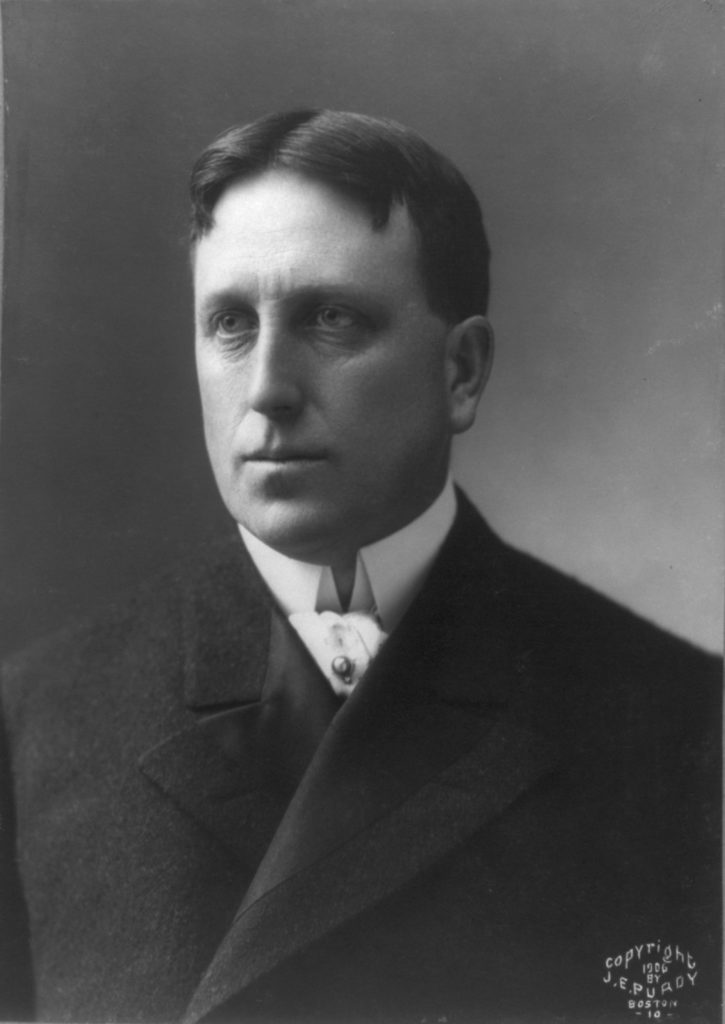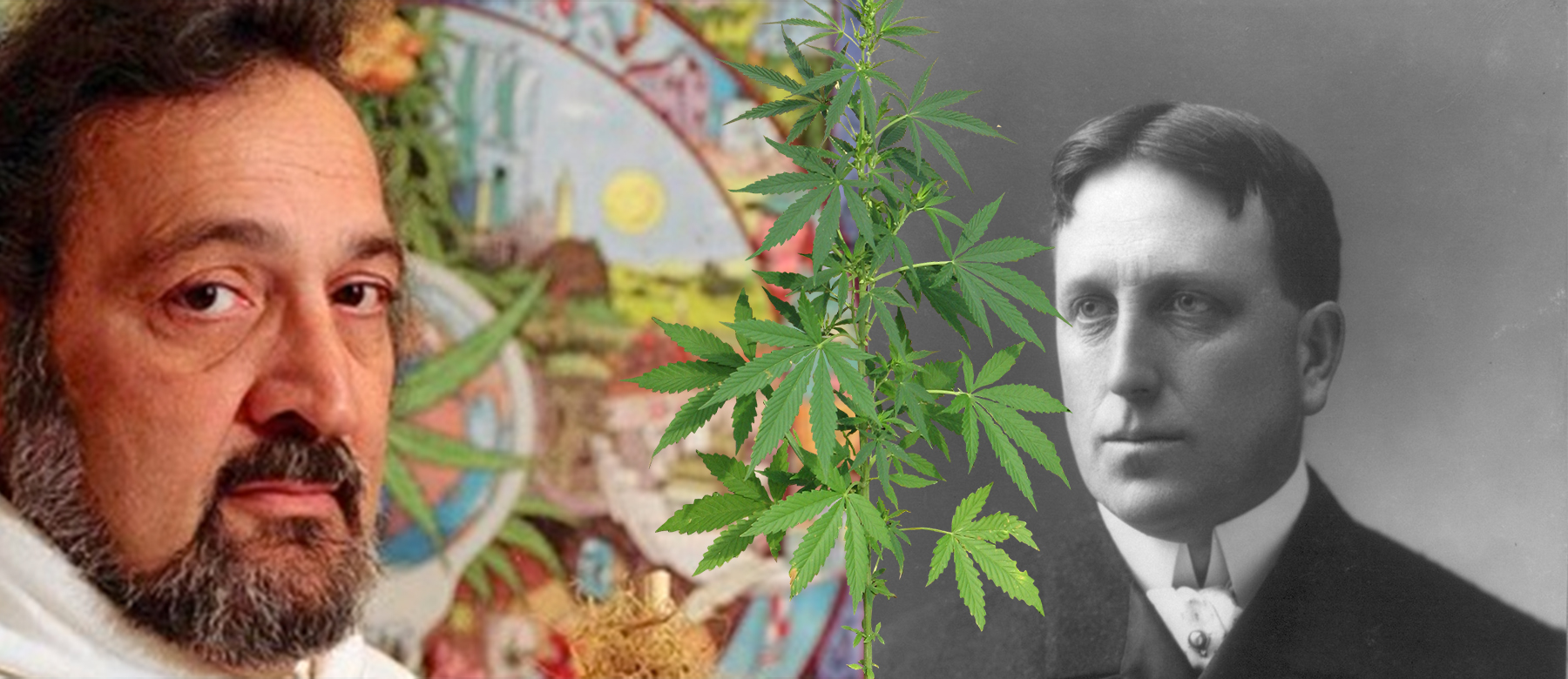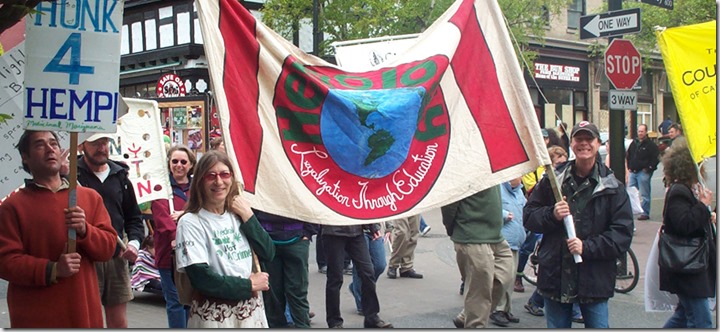Historical Rambles on Cannabis
It is instructive to re-visit the role that news sensationalism has played in demonizing cannabis.
I paid the topic a visit this week. Sensationalism, we will recall, is the conscious use of exaggeration, manipulative language, dramatic photos, lies, and fabrications, the news equivalent, we might say, of using explosives. Some of these elements were present in early 19th century tabloid publications called the ‘penny press.’ But in newspaper history, they are identified most commonly with a later figure, William Randolph Hearst (1863-1951), father of the ‘yellow press,’ a name taken from the colour used in a cartoon featured in Hearst’s papers.
 In cannabis history, Hearst was to become an icon. Hearst, interestingly, was a Democrat, known to pay his staff well. But when it came to news, the man took sensationalism to heart. As his work demonstrates, he spared no use of anti ‘marijuana’ technique. He was a shameless promoter of reefer madness in the 1930s and 40s, the heyday of hysteria on the subject, providing key support for the work of Harry Anslinger, American prohibitionist, and author of the infamous 1937 Marihuana Tax Act. Hearst has been credited, too, with opposing, and helping to destroy, the hemp industry, on the grounds that it posed a threat to the timber based pulp industry, in which he had an interest.
In cannabis history, Hearst was to become an icon. Hearst, interestingly, was a Democrat, known to pay his staff well. But when it came to news, the man took sensationalism to heart. As his work demonstrates, he spared no use of anti ‘marijuana’ technique. He was a shameless promoter of reefer madness in the 1930s and 40s, the heyday of hysteria on the subject, providing key support for the work of Harry Anslinger, American prohibitionist, and author of the infamous 1937 Marihuana Tax Act. Hearst has been credited, too, with opposing, and helping to destroy, the hemp industry, on the grounds that it posed a threat to the timber based pulp industry, in which he had an interest.
My first stop on this visit was to examine the word, ‘tabloid.’ ‘Oid’ is a particle that means, ‘like.’ Tabloid means ‘like a tablet,’ a term invented by Burroughs Wellcome and Company, a pharmaceutical firm based in London in the 1880s. Medicines at that time were standardly available as powders, and Burroughs et al. developed a new, compressed form. A tablet is a graspable object made of compressed material; the company borrowed this form, calling its product a ‘Tabloid,’ a term they trademarked. But even trademarks evolve. By 1900, the word  had taken on metaphorical meanings, and was applied to anything in compressed form, including short, pithy stories in newspapers. Sensational news, always short in form, came to be known as tabloid news. Howling headlines accompanying short, wild tales were the new ‘pill,’ so to speak. Tabloid news reports, similarly, have always been ‘drugoids,’ something many of us have suspected for some time. Contemporary sound bites, I should add, have only made the pills more potent.
had taken on metaphorical meanings, and was applied to anything in compressed form, including short, pithy stories in newspapers. Sensational news, always short in form, came to be known as tabloid news. Howling headlines accompanying short, wild tales were the new ‘pill,’ so to speak. Tabloid news reports, similarly, have always been ‘drugoids,’ something many of us have suspected for some time. Contemporary sound bites, I should add, have only made the pills more potent.
Continuing the visit, my attention fell next on Hearst the sensationalist’s purported effect on the hemp industry. I know less about hemp than I do about cannabis the medicine. But I have read through a transcript, available online, of a meeting convened by Anslinger in 1938, to decide how to implement prohibition. Representatives of the hemp industry and others, who visited hemp fields in the US, reported at this meeting that the flowers were sticky, and heavily resinous. Farmers noted that once cut down, the flowers tended to disappear from fields, most likely courtesy of the neighbours. Tests subsequently done on local hemp flowers indicated the presence of hemp resins. It would not surprise me to learn that the hemp of the day had respectable levels of psycho-activity. After all, who was looking? That fact must have had some effect on hemp prohibition. But the Hearst/timber connection I had yet to consider.
I started by reading a few online histories of Hearst. They indicated that he had inherited some mining interests, and had spent his time, when not acquiring papers, investing in art and film. But nothing was said about timber. Next, I Googled Hearst and timber holdings, only to be met by articles claiming that such holdings were non-existent, and that the theory was without basis. One article, by Brian Dunning, on a site called Skeptoid (why the ‘oid?’), called it an “urban legend.” That was a surprise, but it did coincide with what I had been able to find thus far. The timber theory is usually credited to the  late, legendary cannabis activist, Jack Herer, whose name today is born by a fine strain of bud. I checked my copy of Herer’s book. In The Emperor Wears No Clothes, he refers to “the enormous timber acreage and businesses of the Hearst Paper Manufacturing Division, Kimberley Clarke USA,” a claim, unhappily, not accompanied by a reference. Right, I thought, and looked up Kimberley Clarke. It is indeed an enormous paper manufacturer—I knew that—but no articles on it mentioned Hearst. I searched next for Hearst/Kimberley Clarke, only to find myself back, full circle, in the realm of Skeptoid, and similar critiques.
late, legendary cannabis activist, Jack Herer, whose name today is born by a fine strain of bud. I checked my copy of Herer’s book. In The Emperor Wears No Clothes, he refers to “the enormous timber acreage and businesses of the Hearst Paper Manufacturing Division, Kimberley Clarke USA,” a claim, unhappily, not accompanied by a reference. Right, I thought, and looked up Kimberley Clarke. It is indeed an enormous paper manufacturer—I knew that—but no articles on it mentioned Hearst. I searched next for Hearst/Kimberley Clarke, only to find myself back, full circle, in the realm of Skeptoid, and similar critiques.
What do I conclude? For now, I drop from my historical outlook, the idea that Hearst had timber holdings, and wanted to shut down hemp production for that reason. Of course actual timber barons of the day may have played a role. Perhaps future researchers will shed more light on this matter. Meanwhile, from my standpoint, sensationalism, the rampant racial prejudice of the day, and guilt by association, were causes sufficient to explain cannabis prohibition in all of its forms.
 Panning back from this scene, it is important to remember that cannabis had been prohibited in many places long before it came to the attention to federal governments, either in the US or Canada. These include: Egypt, where, under French occupation, by the late 1870s, hashish was banned, and after British occupation in 1882, cannabis cultivation was banned. Algeria: by the early 1900s, in the wake of French occupation, cannabis was banned. Brazil: introduced into the country by Portuguese colonists, in 1830, cannabis was banned. Jamaica: introduced by indentured servants from India, during the period of British rule, in 1913, cannabis was banned. The list goes on. Colonialism played a large role. But it was also banned in California in 1913; New York City in 1914; Wyoming in 1915, Texas in 1919; and in Iowa, Nevada, Washington, and Oregon in 1923. In the late 1880s, Mexican newspapers, some with English language editions, were already carrying shocking tales of cannabis users who ran through the streets naked, wielding machetes. Thus when, in 1937, Anslinger made his move, with Hearst by his side, they simply hopped onto a wave that had been building for some 60 years. Why had it been building? Something to do with the breakdown of colonialism, perhaps? And of slavery? And a subsequent rise in racism?
Panning back from this scene, it is important to remember that cannabis had been prohibited in many places long before it came to the attention to federal governments, either in the US or Canada. These include: Egypt, where, under French occupation, by the late 1870s, hashish was banned, and after British occupation in 1882, cannabis cultivation was banned. Algeria: by the early 1900s, in the wake of French occupation, cannabis was banned. Brazil: introduced into the country by Portuguese colonists, in 1830, cannabis was banned. Jamaica: introduced by indentured servants from India, during the period of British rule, in 1913, cannabis was banned. The list goes on. Colonialism played a large role. But it was also banned in California in 1913; New York City in 1914; Wyoming in 1915, Texas in 1919; and in Iowa, Nevada, Washington, and Oregon in 1923. In the late 1880s, Mexican newspapers, some with English language editions, were already carrying shocking tales of cannabis users who ran through the streets naked, wielding machetes. Thus when, in 1937, Anslinger made his move, with Hearst by his side, they simply hopped onto a wave that had been building for some 60 years. Why had it been building? Something to do with the breakdown of colonialism, perhaps? And of slavery? And a subsequent rise in racism?
With the march of science in modernity, its rejection of herbal practitioners, its alignment with medicines derived from petro-chemicals, and its love affair with artificial fibres, cannabis, it seems, was doomed for a time to become fodder for media sensationalism. The techniques continue, but anti cannabis sentiment, happily, is in decline. In keeping with this decline, let us vow in our own accounts to shun lurid tales, and exaggeration. They belong to the anti-cannabis brigade. Let us instead, seek accuracy. It will not explode, nor will it be a pill, magic or otherwise, but it is sure to win the day.




